"Jumpers." The most unusual and “mystical” gang of the USSR
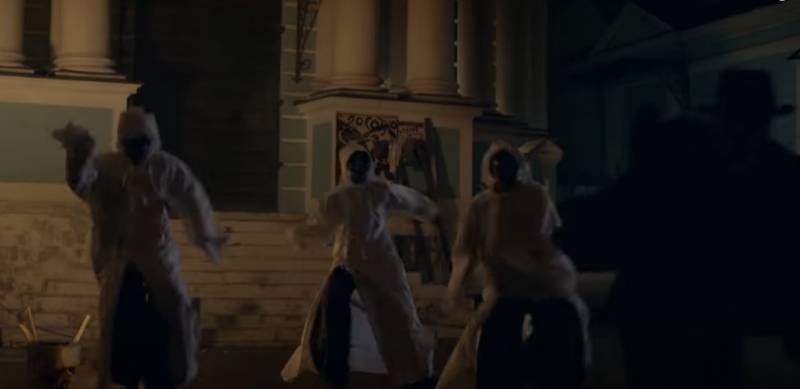
Still from the film “Gentlemen and Comrades”, 2014.
While working on an article about the Parisian Apaches, I remembered that in post-revolutionary Petrograd there were very unusual criminals who were part of the history like "jumpers". Fortunately, this gang was quickly liquidated, but it still left its bad mark on history. “Jumpers” are mentioned in a number of famous books and appear as episodic characters in some films. The most famous work that talks about these robbers and bandits is, of course, Alexei Tolstoy’s novel “1918” (the second part of the “Walking in Torment” trilogy). The writer talks about the attack on one of the heroines of this book:
And here is what is said about them in A. Remizov’s novel “Swirled Rus'”:
“Jumpers” are also mentioned in A. Rybakov’s book “Dirk” (target audience: teenagers):
“Such a little jumper will be wrapped in a sheet,” Borka said, sniffling, “with an electric light bulb in his mouth, and springs on his legs.” He will jump from the street straight to the fifth floor and rob everyone. And jumps over houses. Only the police come to him, and he jumps - and is already on another street.”
And Korney Chukovsky, in his book “From Two to Five,” even cited an “epic” compiled by someone in 1919, “The Fight of the Springs with Vaska Sapozhnikov”:
They gather at the Smolenskoye cemetery.
The Smolensk cemetery is huge.
And they think a great thought,
And the great thought is not small,
How to beat the Petrograd guards,
And all the Gorokhr police,
So that they are no longer persecuted,
They didn’t pursue them, they didn’t bury them,
They didn't shoot them with bullets anymore.
With strong lead bullets.
And the dead man comes out alone in a shroud,
And in a luminous white shroud, the dead man speaks these words:
“Oh, you goy, you are all fierce springs,
You are all fiercely rich springs,
Let's go walk down the street,
And we will be the guards of Petrograd,
Beat the Petrograd guards.
And further:
He took the first dead man and tore him to pieces, he took the second dead man and tore him to pieces, and he took the third dead man by the legs, began to walk along the street, and began to beat the spring with the spring. And he beat the spring for exactly three years, exactly three years and three hours, three hours and three minutes. His mighty shoulders wavered, his chain mail armor tore, but he could not beat the dead. Finally, Vaska wanted to leave. From heaven here a voice says to Vaska:
“Oh you goy, Vasily son of the Shoemakers. You won't be able to leave here. You fought with the springs for exactly three years, exactly three years and three hours, three hours and three minutes, fight for another eight years.”
And Vasily, the son of the Shoemakers, listened. He began to fight again with the springs. And day after day, it’s like rain. And week after week, like a river flows. And year after year, like grass grows. And exactly eight years pass. And he beat all the dead people, every single dead person.”
Other works of urban folklore of those years were the verses of the famous song “Apple”. For example, these:
Yes, on a cast iron
appeared in Petrograd
Jumpers.
Eh, apple
On the windowsill,
appeared in Petrograd
Dead people.
This is how the attack of the “jumpers” is presented in the film “Property of the Republic” (1971):
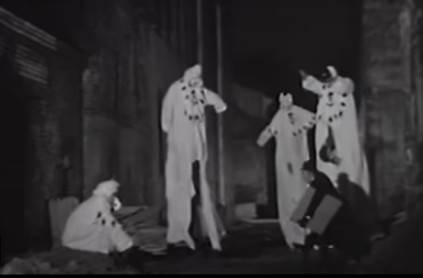
By the way, it is in this film that the seemingly negative, but damn charming hero Andrei Mironov sings the most favorite song of Soviet teenage boys of those years - “The sound of swords, like the sound of a glass, has been caressing my ears since childhood”:
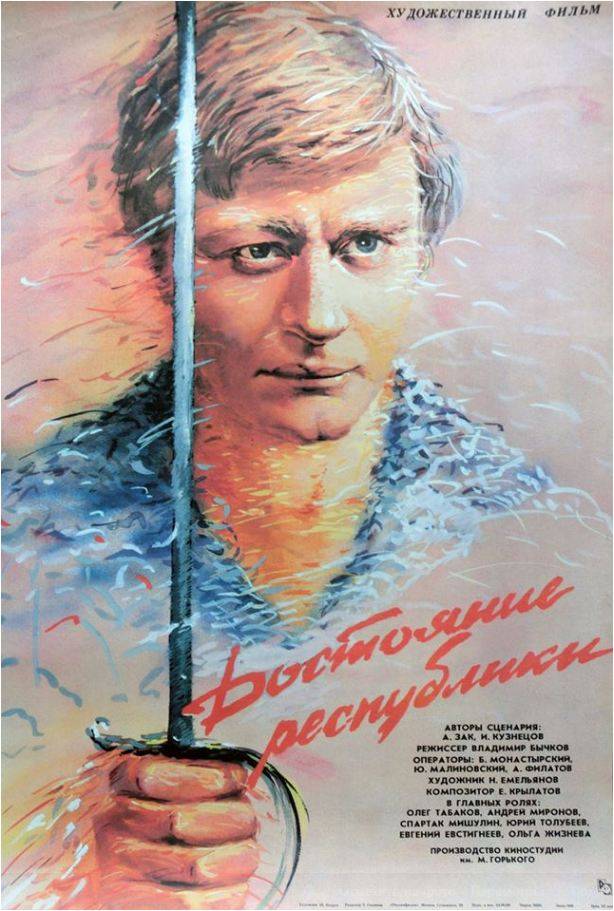
But where did these mysterious “jumpers” come from in post-revolutionary Petrograd?
"Vanka is a living corpse"
The idea of creating a gang of “jumpers” belonged to a certain Ivan Balgausen, a native of St. Petersburg and an “experienced” criminal. He was very thin and puny, and he received his sonorous nickname - “Vanka a living corpse” from his cellmates precisely because of his frail physique. In 1917, he served another term, but was released under an amnesty. Having obtained a sailor's uniform, he tried to “make requisitions” from wealthy citizens, apparently trying to look like the Kronstadt anarchist - precisely among the sailors of the Baltic fleet At that time, simplified ideas of anarchism were very popular. These “revolutionaries” were then sung in numerous ditties. Here is one of them, which is believed to have been written by Sasha Cherny:
Auntie's short fur coat,
Oh, did I teach him that?
Mister Kropotkin.
But the competition in this field was very great, and the frail Balhausen’s appearance, to put it mildly, was not very impressive and formidable. But at the beginning of 1918, he remembered the story of some “educated” cellmate about the so-called Jumping Jack, who from 1837 to 1904. attacked girls in cities in England and Scotland. He liked the idea and immediately began to implement it. But let's digress from the events in post-revolutionary Petrograd and say a little about the British “forerunner” of the Russian “jumpers”.
Jump heel Jack
The first mention of a strange and mysterious creature that attacked mainly lonely girls dates back to 1837. Victims described the attacker as a tall and apparently athletic man wearing a white robe, gloves with large claws and a mask with sharp ears and fangs. Sometimes a black waterproof raincoat was worn over the robe. Some claimed that blue and white flames came from "Jack's" mouth. Others reported that when bullets hit him, a certain “hollow metallic sound, as if hitting an empty bucket».
Two people heard his speech and said that it showed that he was an educated man with a peculiar sense of humor. Usually “Jack” would suddenly jump out of hiding and, screaming wildly, start jumping around the frightened girl. For the victim, this performance often ended in fainting, after which the attacker left. He did not rob or rape the victim, and therefore it was concluded that the attacks were carried out for hooligan reasons by some jaded and bored aristocrat. Since everyone claimed that the attacker jumped amazingly high, journalists gave him the nickname Spring-Heeled Jack.
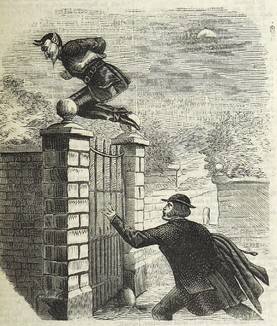
Springheel Jack as pictured in Penny Dreadful magazine, 1837
And this is how we see him on the cover of the same magazine in 1904:
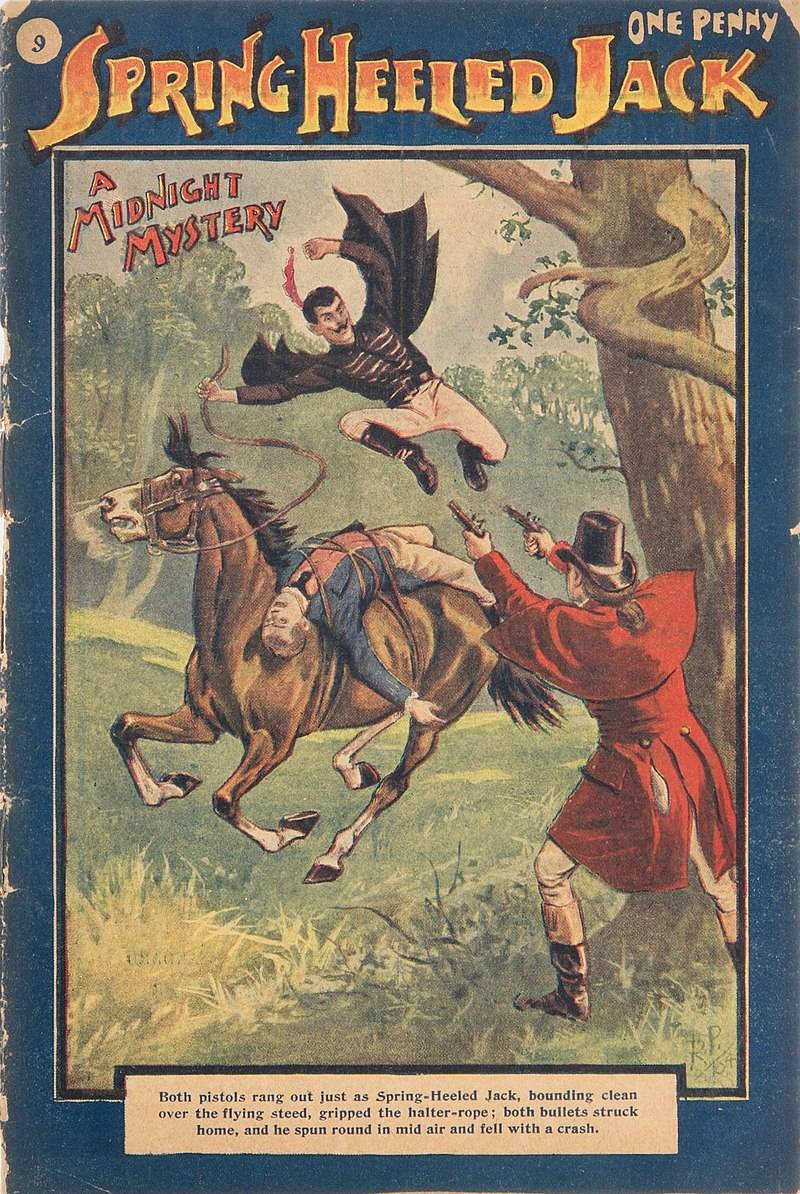
Most often, Jumping Jack appeared in London, but he was also seen in Liverpool, Sheffield, and sometimes in Scotland. The greatest activity was recorded in 1850-1880.
Suddenly this character became very popular, which apparently encouraged him to launch new attacks. His second nickname, which appeared at that time, is curious: “Russian bear” - it seems that ideas about Russian bears were very unique in England in the XNUMXth century.
According to the most popular version, "Jack" was played by the Irish Marquess Henry Waterford, known for his extravagant and often violent behavior, love of high-stakes bets and contempt for women. In society he was called "Mad Marquis».
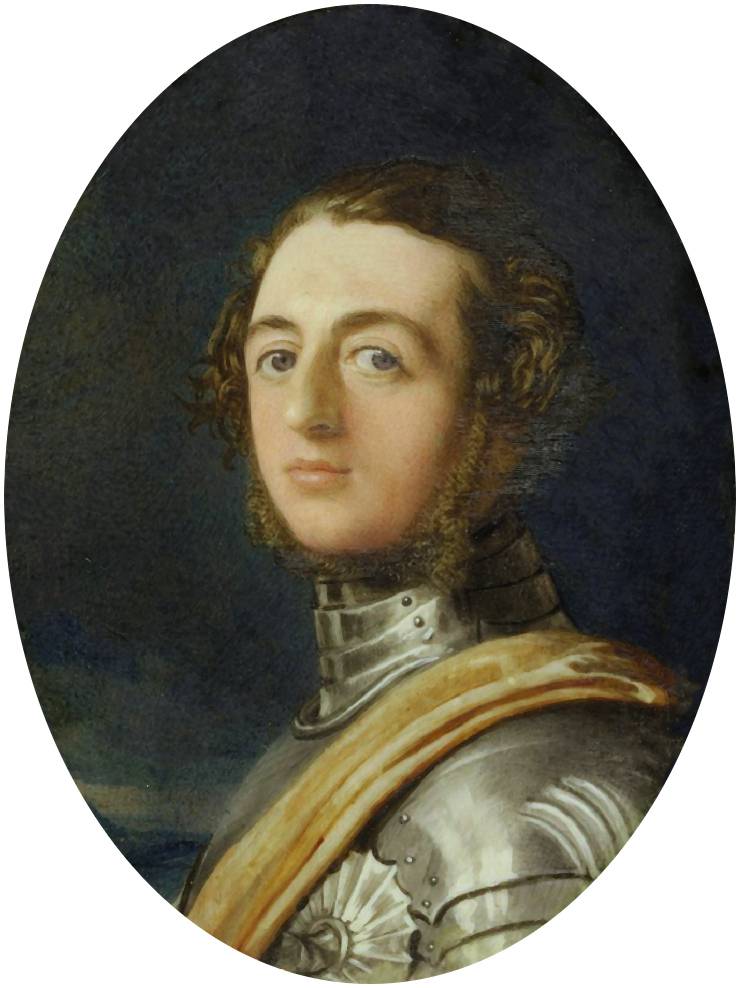
Marquis Henry of Waterford, 1840
It is true that after his death in 1859, Jumping Jack continued to appear in England, but many believe that his role was now played by numerous imitators of the Marquess.
Now let's return to Petrograd at the beginning of 1918.
Jumping Gang
Balhausen shared his innovative idea with his criminal friends, who were delighted and began preparing for robberies according to a new scenario. Among them was a certain Demidov, who was also a tinsmith. It was he who made stilts and springs that could be attached to shoes: some bandits walked around victims on stilts, others jumped. Demidov’s mistress, Maria Polevaya (also known as Manka Solyonaya), sewed white shrouds and caps. They also made masks on which phosphorus was applied so that they glow in the dark. In general, they approached the matter very seriously: the members of the gang diligently learned to walk on stilts and practiced jumping on springs. For greater effect, they decided to attack near the cemeteries - Okhtinsky, Smolensky, as well as in the vicinity of the Alexander Nevsky Lavra. The calculation turned out to be correct: the victims, paralyzed by fear, as a rule, resignedly gave all their valuables to the “dead.” The ranks of this gang were constantly replenished and in 1920 it consisted of more than 20 people. Before the arrest, the gang members managed to commit more than a hundred registered attacks (but not all the victims wrote statements to the police).
Liquidation
It is curious that at first the police refused to believe in the “mystical nonsense” that the victims of the robberies were telling. The victims' statements were considered to be the result of alcohol or drug use. Indeed, against the backdrop of the “Prohibition Law” introduced in 1914, Russian cities were “covered” by an epidemic of drug addiction, especially since before the revolution opium and cocaine were freely sold in pharmacies. Original “cocktails” were invented: “Baltic tea” (a mixture of alcohol and cocaine) and “raspberry” (alcohol with opium).
A. Vertinsky recalled:
With great difficulty, the Bolsheviks managed to lead Russian society out of drug addiction that was beginning to form.
However, the flow of statements about attacks by the “living dead” did not dry up, and the employees themselves every now and then, both at home and on the street, heard stories about “dead people” robbing lonely passers-by. And at the beginning of 1920, two people were killed who apparently tried to fight back the attackers. Young employees who had neither special education nor experience in operational work could not get on the trail of this gang. But in the spring of 1920, Vladimir Kishkin, a graduate of the Faculty of Law and a member of the board of the Petrograd UGRO, was brought into the investigation.
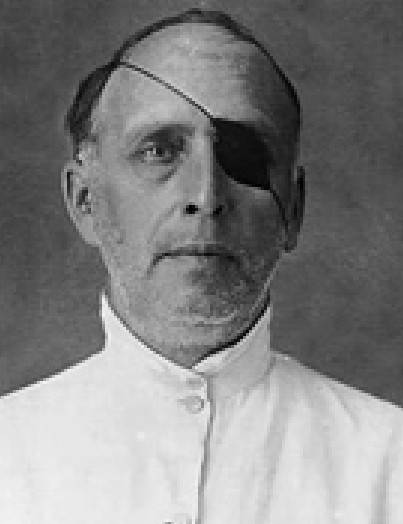
Vladimir Kishkin. Due to the absence of one eye, his colleagues called him Cyclops
Kishkin proposed organizing a “live bait hunt”: disguised police officers walked around the “hot spots”, pretending to be a group of tipsy rich people. They made acquaintances and, as if by chance, showed off expensive watches, cigarette cases, and other valuables. Revolvers of the "revolver" system and more weapon They didn't show it, of course. Very soon the “jumpers” took the bait: several bandits in characteristic “costumes” were detained while attempting to attack three criminal investigation officers. They confessed, thanks to which they managed to arrest everyone else. During the searches, looted property was discovered, including 37 gold rings and other jewelry, 127 suits and dresses, 97 fur coats and coats. Judging by the items of outerwear, there were more than 200 attacks, but some of the coats and suits had already been sold.
All criminals were sentenced to long prison terms.
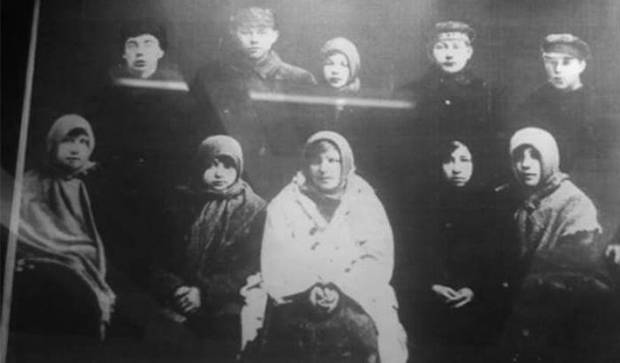
There are a lot of women in this photo of some of the jumping gang members. They did not participate in the attacks, but sold the loot
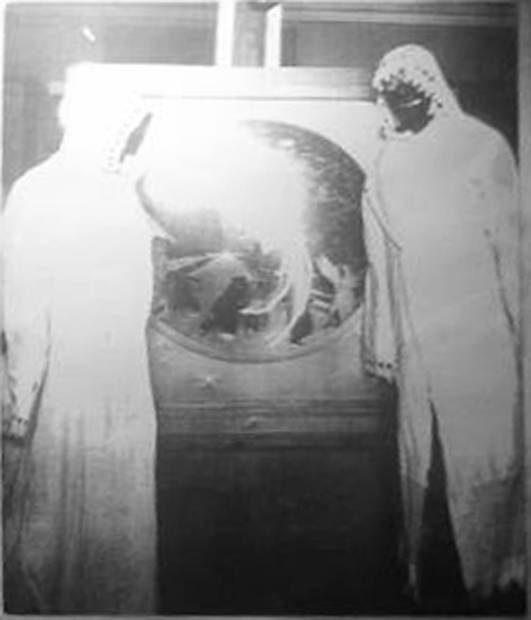
These “jumper” costumes were donated to the Museum of Forensic Science
It is curious that Polevaya, who sewed “shrouds” and caps, had no more problems with the law when she was released: before her retirement, she worked as a tram conductor.
Two people were sentenced to death in the case of the jumpers - the organizer of the gang, Balgausen, and Demidov, who made the springs and stilts.
The “dead” no longer walked around Petrograd at night, and the townspeople breathed more freely.
Followers
Now few people remember about “jumpers,” but in the 20s of the last century the whole country was talking about them. And in the fall of 1925, Moscow had its own “jumpers” who robbed people not far from the Vagankovsky cemetery. The Moscow bandits turned out to be much more cruel than the Petrograd ones; their attacks often ended in the killing of unfortunate people. They did not act evil for long: this gang was liquidated just a few months later - in January of the following year.
Once again, the “jumpers” showed themselves during the Great Patriotic War. In besieged Leningrad, they hunted for bread cards, essentially dooming the people they robbed to starvation. These bandits were not treated on ceremony - they were shot at the scene of the crime. As a result, very soon these new Leningrad jumpers simply “ran out”.
In the fall of 1941, the “jumpers” showed up in Moscow; they operated in the territory adjacent to the Miusskoye cemetery. After meeting with them, chemistry professor Lipnitsky, who taught at the Engineering and Economic Institute, died of cardiac arrest. Another victim of the attack was Bella Rozinskaya, who testified that she was robbed by jumping and howling “dead men” in white shrouds:
Soon the “jumpers” were seen by police officers who heard the screams of the victim of another attack. However, they failed to catch up with the bandits. And then B. Rozinskaya, who was a witness and victim in this case, disappeared. Suspicion fell on her husband, who worked as an engineer at one of the military factories. He claimed that his wife did not return home after leaving with some girl he did not know. The head of the Moscow Criminal Investigation Department, Kasriel Rudin, ordered surveillance of Mikhail Rozinsky. The result exceeded all expectations: it turned out that the husband of the missing woman was recruited by an Abwehr agent who, under the guise of a priest, settled at the Vagankovskoye cemetery. And the “jumpers” had nothing to do with the disappearance and death of his wife: Rozinsky himself killed her on the territory of Losiny Island, because he had a mistress, and his wife was interfering with their love affairs.
And these Moscow “jumpers” were defeated very quickly - according to the Petrograd recipe of Vladimir Kishkin. The bandits surrounded the MUR employee who was acting as a “live bait” (who, according to “legend”, was walking with a suitcase of money) - and were ambushed. Two of them were killed during detention, the rest were detained and convicted. According to investigators, the same Abwehr agent, the false priest from the Vagankovskoe cemetery, was involved in organizing this gang. So German intelligence tried to destabilize the situation in Moscow.
Jumping and howling bandits in white overalls no longer appeared in the vastness of our country.
Information